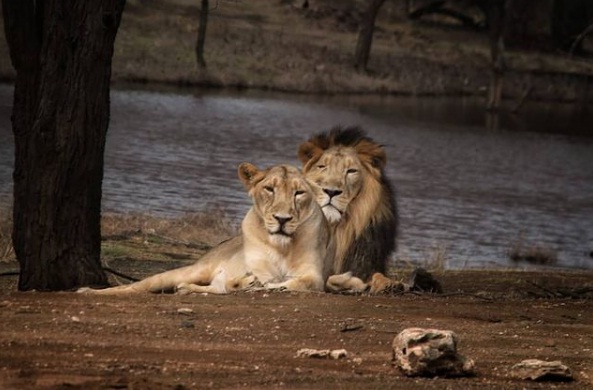Narayan Sarovar Lake
There are seven stone temples in a paved courtyard of 164 feet by 62,1-2. The temples are approached from the lake by flights of stone steps and surrounded by a strong wall. In 1734, the temples of Lakshminarayan and Trikamray were built in the same style as the Dwarka temples. Then the temples of Adinarayan, Govardhannath, Dwarkanath, and Lakshmiji were constructed. he temple of Trikamray, in style and shape resembling that at Koteshwar is 72 feet long 681⁄2 broad and 61 high, stands on a 5 feet 9 inches high platform, and has three side porches with a large one in the centre, all capped with domes resting on twelve feet high pillars. The central porch is 21 feet square, and each of the side porches 9 feet 9 inches. The doors are plated with silver. In the shrine, on a silver throne, stands a black marble image of Trikamray. Under the idol throne is a black marble figure of Vishnu’s eagle, Garuda, with clasped hands kneeling on one leg. Over the image of Trikamray are forty gold and silver parasols, the offerings of devotees. The other five temples built by Vagheli Mahakunvar form, along with the more lately built temple of Kalyanray, a row of six domes supported by fourteen pillars, and forty-eight pilasters, with carving on the bases, shafts, and capitals. The brackets are scrolled volutes and the side pillars of one dome serve to support the lintel of the next, and the corresponding pillars of the next act similarly for the third dome. The temples at the two ends have screen walls under their domes with doors, but the rest have a common verandah with entrances in the fronts the space on the two sides of each entrance being closed with a screen of wooden lattice. Each of the temples has an inscription. Lakshmiji’s temple is without any special feature. Dwarkanath’s or Ranchhodji’s temple has a small shrine opposite to it with a large image of Garuda, holding a weapon whose point impales a cobra. The third shrine, to Govardhannath, is simple. The fourth, to Adinarayan, has a black stone pavement in the gallery. Opposite it is a small lately built shrine of Gopalji. The last, to Lakshminarayan, has silver-plated doors and an idol throne and canopy of silver. In a line with these five temples is the temple of Kalyanray built in 1828 (Samvat 1885) by Rao Deshalji II. The stone and wood frames of the entrance are richly carved, and the doors are plated with silver in which flowers, fruit, leaves, and creepers are carved with much skill. The canopy of the god stands on a pedestal, and is supported on four silver pillars with fine spiral flutes and richly carved friezes, bases, and shafts. The statue is of polished black marble.
Vallabhacharya visited the place during his lifetime as such the site is sacred also for the follower of Pushtimarg.
Two yearly fairs are held here, one in Chaitra (April -May) and the other from the 10th to the 15th of Kartik (November- December), when, from western India, thousands of pilgrims come to perform funeral ceremonies on the bank of the Narayan Sarovar.
How to get there
By Road Narayan Sarovar lies 153 km west of Bhuj and 144 km from Mandvi town. Bhuj is well connected by air, rail and road. ...
By Train The railway station lies on the western railways network.
By Air The Bhuj airport lies 4 km from the city and has ample domestic flights from major destinations in India.
Narayan Sarovar is open
The place holds a fair every 11th to 15th of Kartik (Nov-Dec). You can also witness a number of birds like herons, plovers and egrets. Location: Lakhpat, Kutch district,Gujarat, India. Timing: Open 24 hours.
Best Time to Visit : October to February
Timing: Open 24 hours.







0 Comments